Chemical Reactions of Haloalkanes
Chemical Reactions of Haloalkanes: Overview
This topic consists of concepts such as Chemical Reactions of Haloalkanes, Reaction of Haloalkanes with Aqueous NaOH /Aqueous NaOH, Reaction of Haloalkanes with Moist Ag2O, Reactions of Haloalkanes with KCN and AgCN, etc.
Important Questions on Chemical Reactions of Haloalkanes
and reactions differ from each other because of
Identify A, B, C and D in the following process :
(i)
(ii)
What is the order of reactivity of following compounds towards substitutions reaction.
(i) 
(ii) 
(iii) 
What is the order of reactivity of following compounds towards substitution reaction.
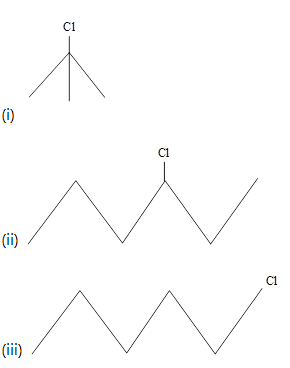
Which one of the following two substances undergoes reaction faster?
(i) 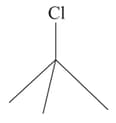 or (ii)
or (ii) 
(CH3)3CMgCl on reaction with D2O produces –
An SN2 reaction at an asymmetric carbon of a compound always gives:
A solution of (+) -2-chloro-2-phenylethane in toluene racemises slowly in the presence of small amount of , due to the formation of –
A solution of (+) -2-chloro-1-phenylethane in toluene racemises slowly in the presence of small amount of , due to the formation of:
1–chlorobutane on reaction with alcoholic potash gives –
n–Propyl bromide on treatment with ethanolic potassium hydroxide produces –
n–propyl bromide on treatment with ethanolic potassium hydroxide produces
The major product of the following reaction is
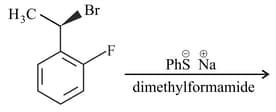
The product of following reaction is –
Methyl propyl bromide reacts with and gives whereas on reaction with it gives The mechanism followed in these reactions and the products and respectively are:
Match List-I with List-II.
1-Bromopropane is reacted with reagents in List-I to give product in List-II
| List-I Reagent | List-II Product | ||
| A. | KOH (alc) | I. | Nitrile |
| B. | KCN (alc) | II. | Ester |
| C. | AgNO2 | III. | Alkene |
| D | H3CCOOAg | IV. | Nitroalkane |
Identify the correct order of reactivity for the following pairs towards the respective mechanism
(A) 
(B) 
(C) Electrophilic substitution
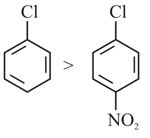
(D) Nucleophilic substitution
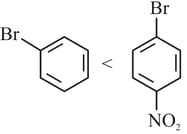
Choose the correction answer from the options given below:


Where Nu = Nucleophile
Find out the correct statement from the options given below for the above two reactions.
Choose the halogen which is most reactive towards SN1 reaction in the given compounds (A, B, C & D)
A. 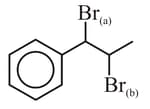
B. 
C. 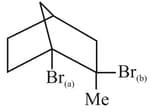
D. 
The rate of nucleophilic substitution reaction is maximum in
